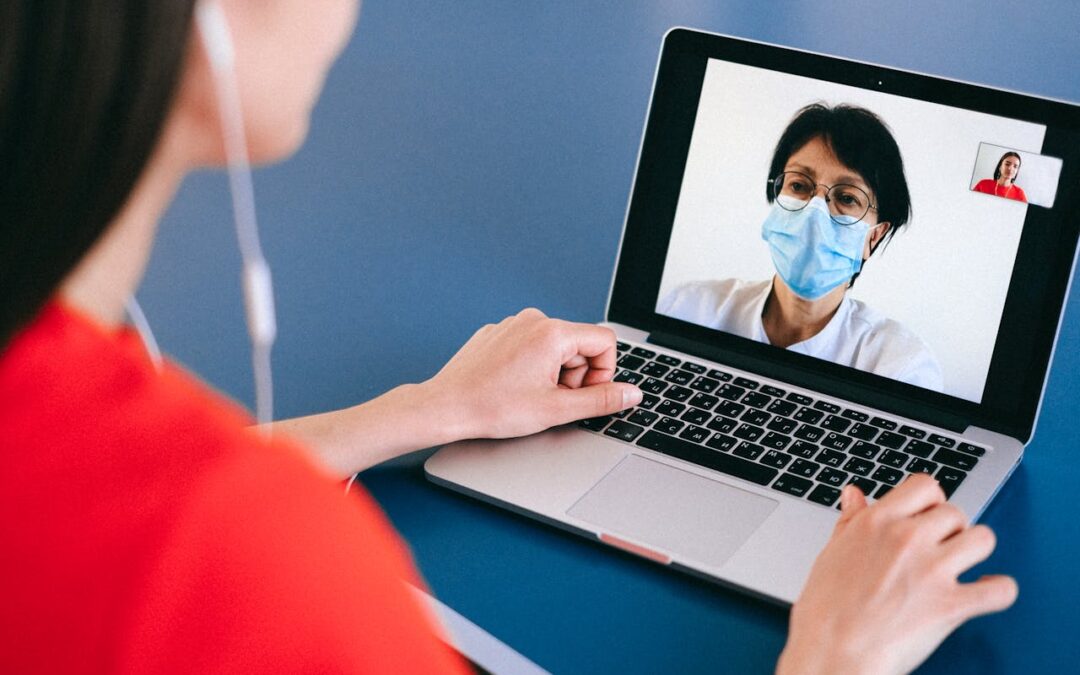When life gets busy, taking time for your mental health can slip down the list. Between work, family, and daily responsibilities, finding room for regular care can be tough, especially if you’re dealing with ADHD. People often feel like they have to squeeze therapy into the corners of their schedule or postpone help until things calm down. But waiting too long can just make things harder.
Telehealth ADHD treatment opens the door for a smarter, simpler way to stay on track. Having the option to meet with a therapist online means appointments can fit into your day without adding more stress. It gives you more control over when and where you get support while keeping the focus on helping you feel more balanced and less overwhelmed.
Why Telehealth Is Ideal For ADHD Care
One of the strongest benefits of telehealth is the ability to better manage your time. If you’re someone juggling work, caregiving, studying, or all of the above, you know how fast a day fills up. Booking an appointment in person often means one or two hours out of your day with commuting, parking, and waiting room time. With telehealth, you can use that time instead for what really matters—the session itself.
Working with ADHD can sometimes mean needing a routine that doesn’t always feel rigid. Telehealth gives more breathing room. You can plan sessions before your busy day starts, during a lunch break, or after you’ve already settled in for the evening. This type of flexibility lets therapy work for you, not the other way around.
There’s also something to be said about being at home in a space that feels familiar. Many people with ADHD report stronger focus during virtual sessions because they’re in their own environment. Of course, it’s not perfect for everyone, but being in your comfort zone may mean fewer distractions from external settings. You can have something nearby to fidget with, sit on your favorite chair, or adjust the lighting and noise level to suit your needs better than a shared office setting can.
Another big upside? No commute. That might seem minor, but for people who get overwhelmed by constant movement or have trouble with time management, cutting out travel can make a big difference. Less running around can also lead to showing up to sessions more consistently. Over time, that consistency can help you stay on top of goals and get more out of every conversation.
Making The Most Of Your Telehealth Sessions
Creating a peaceful space, even just for a brief time, can make a big difference in how much you’re able to focus during virtual sessions. You don’t need a fancy setup or total quiet—just a space with fewer distractions where you feel settled and ready to talk.
Here are a few simple things you can try to get more out of your telehealth ADHD sessions:
1. Pick a low-distraction spot. This could be your bedroom, an office nook, or even a parked car if that’s the only quiet place you’ve got. The main thing is limiting interruptions.
2. Set up your device ahead of time. Whether you’re using a phone, laptop, or tablet, make sure it’s charged and you know how to get into the video app without rushing.
3. Keep a notepad and pen nearby. Writing down what you want to bring up or anything that stands out during the session can help you stay focused and carry ideas into the week.
4. Use headphones. They boost audio clarity and help cut out background noise, which helps if you’re trying to dodge distractions or keep the session more private.
5. Close other apps or tabs. It’s easy to get sidetracked by notifications. Turning them off before your session can help you stay present for the whole conversation.
It’s also smart to think about what kind of support you need before you click into your session. Even if it’s just a rough idea of what’s been on your mind lately—maybe you’ve had trouble with follow-through at work or daily routines feel harder than usual—sharing those pieces helps shape the session in a way that works toward progress.
Lastly, make sure your internet is working well. That extra minute double-checking your Wi-Fi or mobile data can help make sure your session runs without hiccups. Some people even keep a backup plan, like switching to a different device if needed. Little planning steps like that can go a long way when it comes to staying connected and making the time feel useful.
Integrating Telehealth Into Your Routine
Making telehealth ADHD treatment fit into your everyday life takes a little thought, but once it clicks, it can become part of your flow. One thing that helps is choosing session times that match your energy and focus levels. For some, mornings work best when the day feels fresh. For others, afternoons offer a mental break, and evenings might be the only time they can really pause. Consistency matters, so if possible, try to book sessions at the same time each week to build a habit.
The flexibility of telehealth also comes in handy when life throws surprises. Kids stay home from school, a meeting runs long, or your schedule shifts. Telehealth appointments can often adjust with you. It takes some of the pressure off and makes sticking with treatment feel manageable instead of like one more demand on your day.
There are small ways you can anchor telehealth into your existing routine without it feeling like a burden. A few ideas to start:
– Pair your session with something else you already do, like a morning cup of coffee or the end of your workday
– Set session reminders, just as you would for any other meeting or appointment
– Make post-session notes part of your wind-down or weekly review routine
By linking appointments to your real life, treatment becomes more doable. It doesn’t have to feel separate. It becomes part of how you take care of your mental and emotional well-being.
Staying Engaged And Motivated
With ADHD, it’s easy to drift during longer tasks, and therapy is no exception. Sticking with telehealth requires some tweaks to help you stay engaged. One way is to set small goals for sessions. Think about one thing you want to work through or one question you want to ask. This gives the conversation direction and helps you feel a sense of progress.
Another technique is keeping up with your treatment plan outside of sessions. If you and your provider talk about a new habit, journaling tool, or focus strategy, try it out and report back. You don’t have to get it perfect. Just explore what clicks. These little interactions build momentum and remind you that it’s not just talk, it’s action that supports real life.
Be honest during sessions. Let your therapist know if something feels off or if you’re having trouble staying with the conversation. Adjustments can be made, whether that’s shorter sessions, breaks, or more visual support. Open and ongoing communication helps shape care around how your brain truly works.
Most important, keep showing up. ADHD often creates ups and downs with focus and motivation, and that’s okay. Progress doesn’t have to be fast or flashy. It just has to be steady enough to lead you forward, one session at a time.
Building Stronger Support Structures
Managing ADHD can feel isolating, especially when energy levels shift or everyday tasks feel harder than expected. Building a network around you helps lighten that load. Telehealth makes it easier to include family or partners in treatment when appropriate. They can join a session from their own screen, which helps them hear how they can be supportive.
You might also get ideas from your therapist for tools and resources to explore between appointments. These might include apps to track habits, reminders to help manage time, or reading material that supports what you’re working on. With guidance, these tools can be added to your daily routine where they make sense.
Another useful layer is creating ADHD-friendly spaces or activities within your home. For example, using color-coded calendars or timers, setting up a quiet thinking area, or making small areas distraction-free can help reinforce what happens during therapy. These don’t need to be fancy solutions. They just need to reflect what helps you stay grounded and focused.
When the people in your life understand how ADHD affects your day and how telehealth supports your growth, it creates more patience, better communication, and shared responsibility. You don’t have to go through it alone, and you’re not expected to figure out every piece by yourself.
Embrace A More Manageable ADHD Care Plan
Your time is valuable, and so is your well-being. Making space for ADHD support doesn’t have to be a scheduling headache. With telehealth, care becomes part of your routine, not a disruption to it. You spend less time getting from place to place and more time actually working on what moves you forward.
Whether your weeks are packed with family life, career goals, learning, or just trying to keep things on track, virtual ADHD treatment can give you a calmer approach to mental health support. It takes the stress out of showing up and helps you focus on what really matters—understanding your ADHD and finding ways to feel more stable and in control.
You don’t have to wait until your schedule slows down. The support you need can meet you where you are, right in your current routine. With the right tools, planning, and guidance, ADHD care can stop feeling like one more thing to juggle and start feeling like a useful part of your day.
Discover how telehealth ADHD treatment can fit naturally into your daily life. Dr. Shahin Carrigan Ph.D., MFT, offers flexible support that works with your schedule, helping you feel more in control from the comfort of your home. Learn how telehealth ADHD treatment can bring more ease and structure to your routine.




